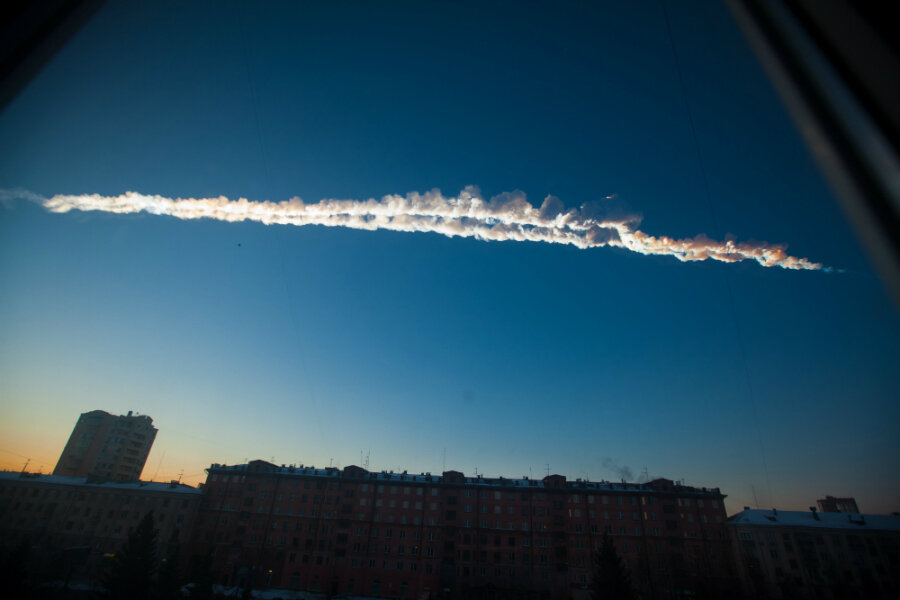Giant fireball streaks through the night sky. Is that normal?
Loading...
On Tuesday night, Toronto police and fire services received calls about sightings of a plane crash, and Twitter was astir with reports a fireball streaking through the sky.
For some, the streak of bright light across the sky around 10:30 p.m. was accompanied by a sonic boom, according to The Washington Post. The hashtags #meteor and #fireball spread on Twitter, and the University of Toronto Scarborough Observatory managed to capture the fireball on video.
To much relief of emergency responders, the phenomenon result in no damage and was most likely just a meteor shower. But it was one that caught a lot of people by surprise: Nearly 510 reports have been submitted to the American Meteor Society by individuals from Canada, New York, Pennsylvania, Maryland, New Jersey, Washington, D.C., Michigan, West Virginia, Delaware, Massachusetts, and Virginia.
Mike Hankey, operations manager for the American Meteor Society, told The Washington Post that it’s one of the “top 10 events of the year” in terms of the number of reports it received.
“What struck me is that people from Canada to southern Maryland saw it,” Mr. Hankey said. “That means it was pretty bright.”
Mass sightings are fairly rare because fewer than 10 fireballs or meteors are seen or heard in a year, Hankey said. But this is not the first time a fireball has been sighted this year. In June, a fireball that lit up the pre-dawn sky accompanied with sonic booms raced across the Arizona sky, according to NASA.
One of the most high-profile fireballs in recent years may have been in 2013 when a meteor exploded over Russia, injuring hundreds of people as windows were shattered by the shockwave.
Stephanie Pappas with LiveScience reported then that the proliferation of handheld technology to record the event helped the understanding of what happened.
"There may be other sources of data we never had in the past," Mark Boslough, a physicist at Sandia National Laboratories told Pappas. "I think it's pretty exciting to think about mapping out the shock wave and getting more information about this than we've ever had from any past events."
As for the fireball sighting on Tuesday, the proliferation of social media and smartphone cameras likely propelled the event to more popularity – and confusion as well.
In Canada, reports of a plane crash were circulating around Twitter until officials confirmed that it was part of a meteor shower and that the closest airport was not missing any planes, according to The Toronto Star. Even sports fans diverted their attention from a baseball game in Toronto where the Baltimore Orioles were playing the Blue Jays to tweet about seeing a meteor shower south of the stadium, as reported by the Associated Press.
While scientists still cannot confirm for sure what the fireball was, Hankey theorizes that it may be a piece of comet or an asteroid that may potentially end up as meteorites on the ground.
Theories tend to align with the hypothesis that the fireball was part of a meteor shower because the annual Orionid meteor showers begins in early October. National Geographic reports that the shower will kick off with a “sprinkle of shooting stars” and at its peak later this month, may present as many as 20 shooting stars per hour. The Orionids are known to be “bright and quick,” according to NASA.






